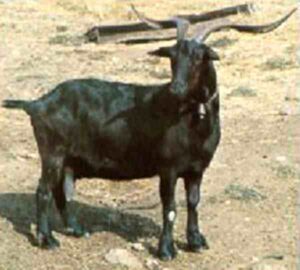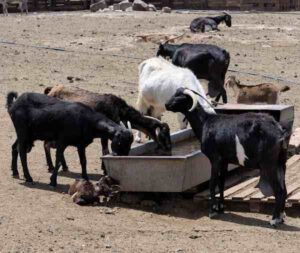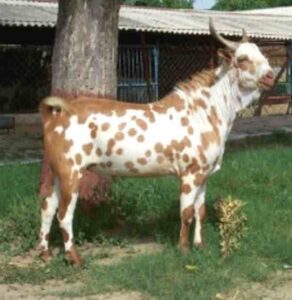Learning about when a goats vulva start to expand during pregnancy is very important. Especially, if you have pregnant doe in your herd which is going to give birth of kids soon.
If your doe is pregnant, then you have to make sure you don’t miss any signs that her kid/kids are ok.
Usually goat’s gestation period takes not more than five months (155 days). So you have a lots of time to get everything ready after the mating of your does.
When A Goats Vulva Start To Expand During Pregnancy?
Usually a healthy goat’s vulva should appear relatively tight until birth is impending. During a few days prior to kidding, the vulva starts opening and becomes slacker. This is a clear sign that a or a few new kids are going to see the world soon.
Bagging Up
Bagging up means your doe’s udder fills with milk and become ready to feed the newborn kid/kids. Bagging up is the first sign of kidding. You can determine the delivery date is coming closer when your doe starts bagging up.
Bagging up is an obvious sign, rather than something subtle or quick that you might miss. Some does don’t bag up until the day before delivery. And some goats might bag up a week or more before kidding.
If you have numerous goats in your herd, then separate the pregnant doe once you see her bagging up. Keep her in a completely separate area where other goat’s won’t disturb her or in such an area where you intend to have her kidding.
Days Before Birth
The doe becomes restless, when the kid/kids are about to born within a day or two. She starts pawing and getting up and down frequently and appears nervous. During this period, you might see a mucus discharge emanating from her vulva.
Usually the discharge from her vulva should be thin and relatively clear. You need to consult with your vet, if you see greenish discharge. Because it indicates infection. Discharge of mucus is also an indicator for your does that her vulva is beginning to expand.
When she starts bleating and doesn’t stop, that’s the key that labor is beginning and your doe is going to give birth of kids soon. Sometimes some doe might go on making noise for up to 12 hours before delivery.
Kidding
When kidding is very closer, your doe will start walking around nervously and start getting up and down constantly. And once the kid/kids move into the birth canal, the doe’s flanks appear sunken in.
The kids are not far behind, when you will notice a thick, stringy vaginal discharge. Your doe will begin strong constractions. And you will see a reddish fluid bag emanating from her vulva. And then she has more contractions.
After a few contractions, you should see the front feet and nose emerging. After a few more contractions, the first kid is born. If your doe has more than one kid, then any others will be born within intervals of a few minutes.
Afterwards
After kidding you can wipe off some of the amniotic fluid from the kid’s nose (if you attend the birth). Open the sac if it didn’t break.
Usually your doe will lick off and clean her babies naturally. The placenta should come out within half an hour after delivery.
You can dispose of it, or your doe can eat it. If the placenta doesn’t emerge within two hours of the birth, then it’s an emergency. And you have to call the vet as soon as possible. If this happen, then there is a possibility a dead kid is still inside your doe. So you are in need of help of a vet urgently.






